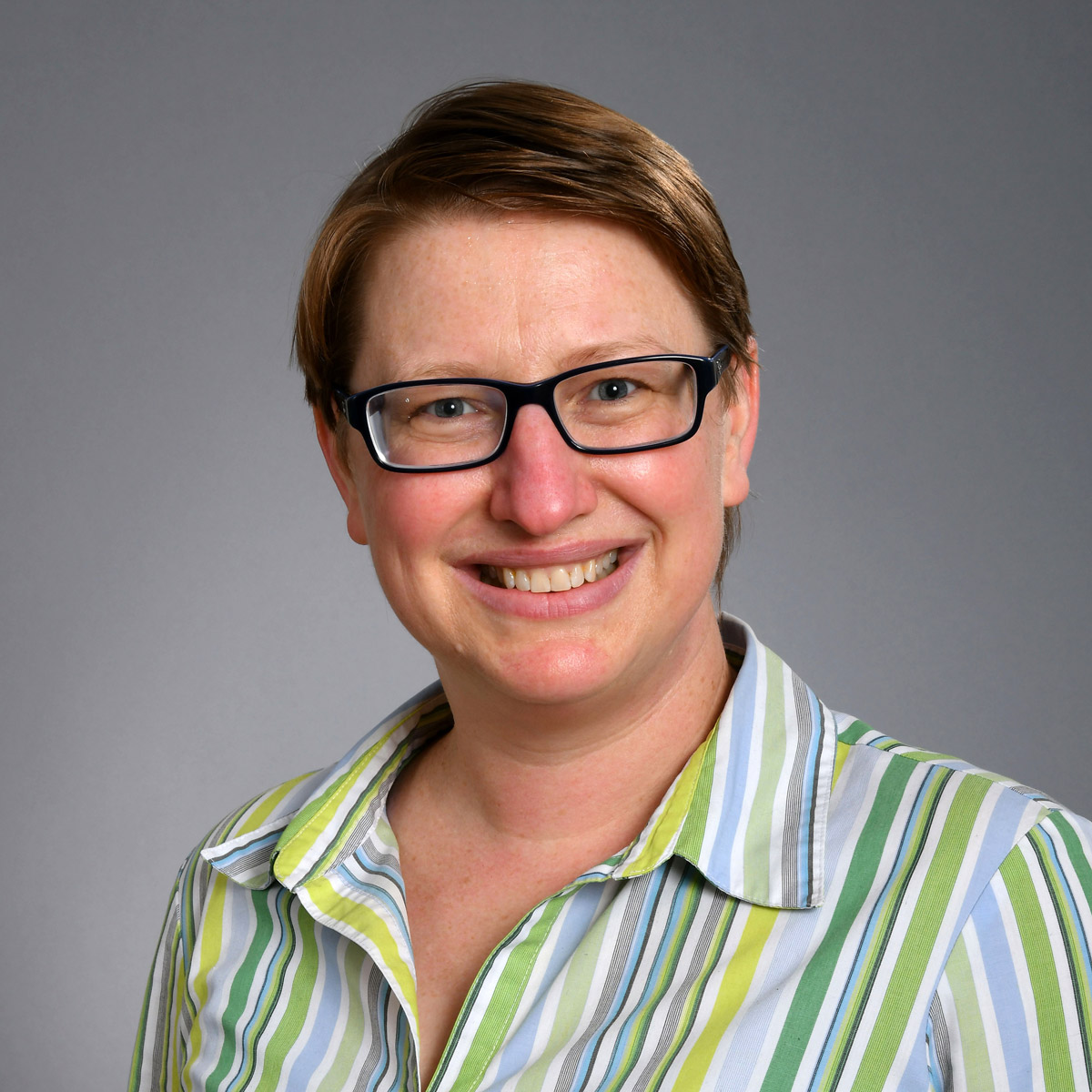Assistant Professor of Biology
Education
Ph.D., Organismic and Evolutionary Biology, Harvard University, 2006-2012
B.S., Genetics and Plant Biology, University of California, Berkeley, 1998 - 2002
About
I am a microbiologist with a special interest in fungal ecology and evolution. The diverse microbial communities that surround us fascinate me, and I love thinking about how microbes respond to their changing environments over time. I focus my research on the yeasts, which are the large group of diverse single-celled fungi. Some yeasts, such as the yeasts that make bread and alcoholic beverages, are very familiar, but the world is full of many other kinds of yeasts. These microbes live in almost any imaginable habitat, and are a great way to explore how microbes evolve, and how they interact with their natural world. I love bringing my passion for microbiology to students, and I love challenging them to think about how they interact with microbes in their daily lives.
Publications
Peer-reviewed publications
El-Khatib S*, Lambert MG*, Reed MN*, Goncalves MB*, Boynton PJ (2023) Leaf decomposing fungi influence Saccharomyces paradoxus growth across carbon environments. microPublication Biology.
*Wheaton student authors
Mozzachiodi S, Bai FY, Baldrian P, Bell G, Boundy‐Mills K, Buzzini P, …, Boynton, P (2022) Yeasts from temperate forests. Yeast 39:4-24.
Boynton PJ, Wloch-Salamon D, Landermann D, Stukenbrock EH (2021) Forest Saccharomyces paradoxus are robust to seasonal biotic and abiotic changes. Ecology and Evolution 11:6604-6619.
Ono J, Greig D, Boynton PJ (2020) Defining and disrupting species boundaries in Saccharomyces. Annual Review of Microbiology 74:477-495.
Boynton PJ, Peterson CN, Pringle A (2019) Superior dispersal ability can lead to persistent ecological dominance throughout succession. Applied and Environmental Microbiology 85:e02421-18.
Boynton PJ (2019) The ecology of killer yeasts: Interference competition in natural habitats. Yeast 36:473-485.
Boynton PJ, Kowallik V, Landermann, D, Stukenbrock EH (2019) Quantifying the efficiency and biases of forest Saccharomyces sampling strategies. Yeast 36:657-668.
Boynton PJ, Janzen T, Greig D (2018) Modeling the contributions of chromosome segregation errors and aneuploidy to Saccharomyces hybrid sterility. Yeast 35:85-98.
Kraemer SA, Boynton PJ (2017) Evidence for microbial local adaptation in nature. Molecular Ecology 26:1860-1876.
Boynton PJ, Stelkens R, Kowallik V, Greig D (2017) Measuring microbial fitness in a field reciprocal transplant experiment. Molecular Ecology Resources 17:370-380.
Boynton PJ, Greig D (2016) Species richness influences wine ecosystem function through a dominant species. Fungal Ecology 22:61-72.
Boynton PJ, Greig D (2016) Fungal diversity and ecosystem function data from wine fermentation vats and microcosms. Data in Brief 8:225-229.
Gruber H, Wessels W, Boynton P, Xu J, Wohlgemuth S, Leeuwenburgh C, Qi W, Austad SN, Schaible R, Philipp EE (2015) Age-related cellular changes in the long-lived bivalve A. islandica. Age 37:90.
Boynton PJ, Greig D (2014) The ecology and evolution of non-domesticated Saccharomyces species. Yeast 31:449-462.
Bruns TD, Peay KG, Boynton PJ, Grubisha LC, Hynson NA, Nguyen NH, Rosenstock NP (2009) Inoculum potential of Rhizopogon spores increases with time over the first 4 yr of a 99-yr spore burial experiment. New Phytologist 181:463-470.
Editorials, preprints, and other publications
Boynton P, Patil KR, Stefanini I, Stelkens R, Cubillos FA (2022) Yeast ecology and communities. Yeast 39(1-2):3.
Teaching Interests
I want to help students to develop their relationship with the natural world around them. I teach courses in the Biology department, and my favorite courses to teach focus on microorganisms. I help students explore their own biological interests through hands-on activities, course projects, and class discussions. What questions do you want to answer about nature? Let’s find the answers together!
Courses I teach at Wheaton:
- Introductory Biology
- Microbiology
- Biostatistics
- Microbial evolution
- Senior seminar in Biology
- Research experience in Biology
Student Projects
- Here are some beautiful leaf-associated fungi isolated by student Chris Klein

- Check out our group’s paper by Wheaton students Samer El-Khatib, Maddie Lambert, Meghan Reed, and Melane Goncalves! We found that interactions between the yeast Saccharomyces paradoxus and other fungi depend on the type of food available
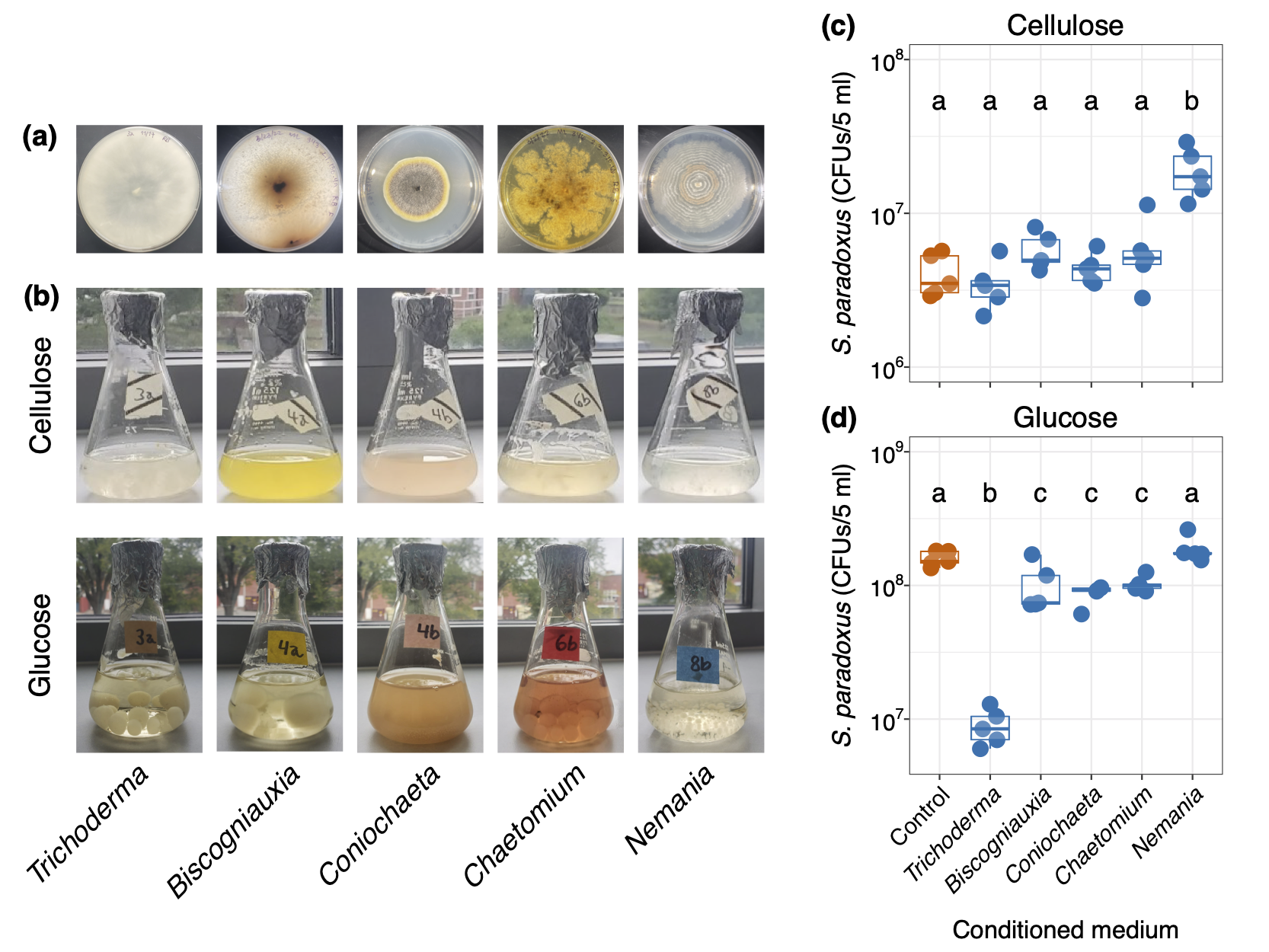
- Here is some beautiful agar art from Samer El-Khatib, made with our model yeast Saccharomyces paradoxus
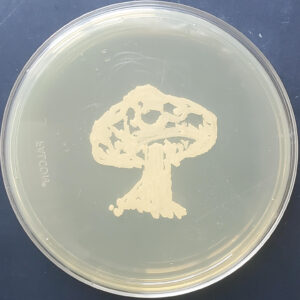
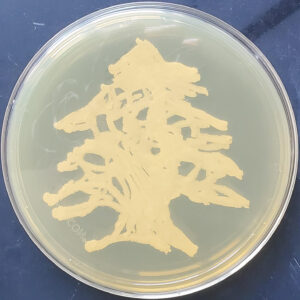
- Maddie Lambert explains her independent project on fungal diversity in Wheaton Woods on Wheaton’s Academic Festival blog!
- Melane Goncalves and Meghan Reed explain their summer 2021 yeast research on Wheaton’s Academic Festival blog!
- Student research on yeasts was featured in the September 3, 2021 issue of Wheaton News!

Photo of a Wheaton Woods fungus taken by Maddie Lambert
Research Interests
Single-celled fungi are everywhere! These fungi, called “yeasts,” are famous for their role in food and beverages, but yeasts are an extremely diverse group of fungi that can be found in forests, oceans, the human body, and many other ecosystems. However, even though scientists have found them in nearly every place on Earth, we don’t understand what they’re doing. Even questions as simple as “what do yeasts eat in nature?” and “how do yeasts interact with other living things?” don’t really have answers.
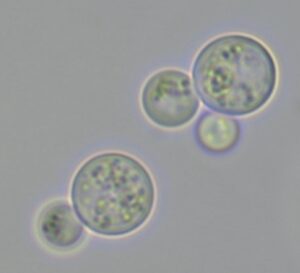
An example of the yeast Saccharomyces paradoxus under a microscope. This yeast was found by students working with dead leaves and soil in Wheaton Woods.
I am researching model populations and communities of yeasts in soils, on plants, and in beverages. I especially want to know how yeasts rely on other living things, including plants, humans, and other fungi, to get what they need to grow and survive. I also want to know how they evolve and how they contribute to the ecosystems they live in. What would happen if there were no yeasts on Earth? What makes single-celled fungi special, and how is their ecology different from multicellular fungi?
